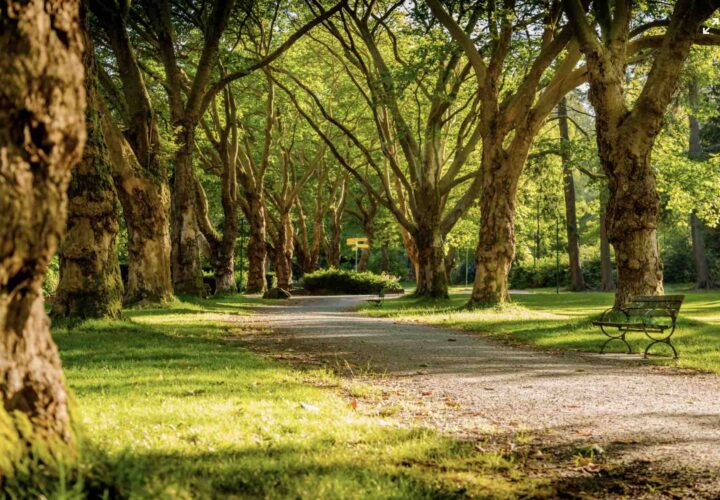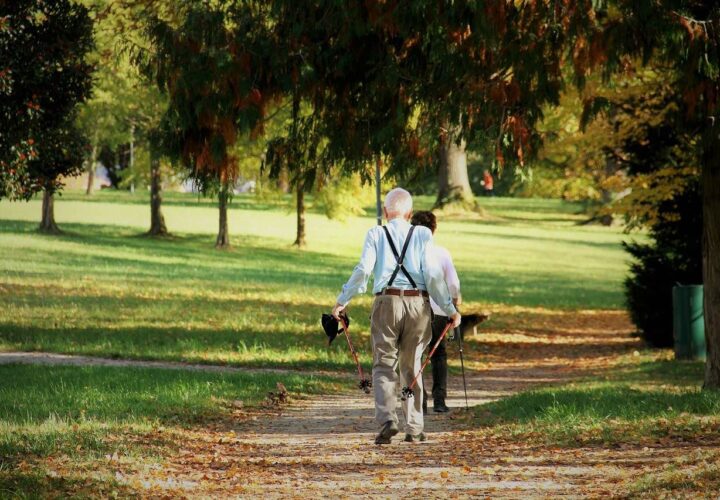A new study shows that people who have green space, like parks, near their homes are reaping cognitive health benefits.
When it comes to our wellbeing, where we live matters. Residential neighborhoods may not only influence our mental health, but our physical health too — including brain health. A range of factors all play a role in this connection between brain health and the places we live in, such as access to education and health services, as well as opportunities to exercise. But researchers say that people’s exposure to green outdoor spaces, such as public parks, gardens, hiking trails or other places where people can experience nature or be surrounded by flora, may be part of the picture too.
A recent study, published in JAMA, showed that women who lived in residential areas with high levels of green space had better cognition, compared to women who lived in areas with less exposure to green space.
Given the rising number of dementia cases, experts highlight that urban planning, by way of offering green spaces for residents, could serve as one among many dementia prevention strategies.
“What these results suggest is that exposure to green space can be investigated as potential population-level approaches to improve cognitive function,” Marcia Pescador Jimenez, the study’s lead author and an assistant professor of epidemiology at Boston University School of Public Health, said of the recent study’s findings.
According to Jimenez, past research has linked exposure to areas with plenty of ground vegetation with a host of benefits for people’s physical and psychological conditions.
“Greenness has been associated with so many improvements in health,” Jimenez told Being Patient. “People have found associations with lower blood pressure, [higher] physical activity, higher birth weight, lower risk of mortality. But there’s actually not a lot of research going on on the association between green space and brain health.”
That’s the gap in research which her team is seeking to address. For the study, Jimenez and her colleagues combed through data from the national-wide study known as the Nurses’ Health Study II. The analysis included 13,594 women who were, on average, 61.2 years old.
They used a satellite image-based metric to estimate participants’ exposure to green spaces in relation to their residential addresses in 2013.
After controlling for age, race and socioeconomic status, the researchers found that greater exposure to green spaces was significantly associated with higher scores on attention and processing speed, as well as overall cognition.
Finding: specific aspects of cognition improved with greater exposure to green space
In particular, the attention and processing speed levels of women who lived in areas with more vegetation were estimated to be the equivalent of 1.2 years younger, cognitively, compared to women in residential areas with less exposure to green spaces.
However, the study indicates that while green space benefits attention and processing speed, it doesn’t impact all aspects of cognitive health to the same extent. The team observed that greater exposure to green spaces was not linked to learning or working memory.
Then, the researchers took a closer look at the variables that could explain the connection between green spaces and greater cognition. Reduced rates of depression, which is a dementia risk factor, among participants with more exposure to greenery, may partly explain why greenery is linked with better brain health, the team observed. And past research has shown that green space is linked with lower levels of depression. But neither air pollution nor physical activity, both of which are also dementia risk factors, accounted for this association, the researchers observed. According to Jimenez, further research is needed to delve deeper into these mechanisms and others.
To expand on their research, Jimenez’s team is now exploring how certain types of vegetation, like trees and grass, may be linked to cognitive functioning over time. The ongoing analysis includes both men and women, as well as more diverse populations, including Hispanics, African Americans and Asians.
All in all, Jimenez said the recent study represents a first step to inform policymakers on creating living spaces that promote brain health.



